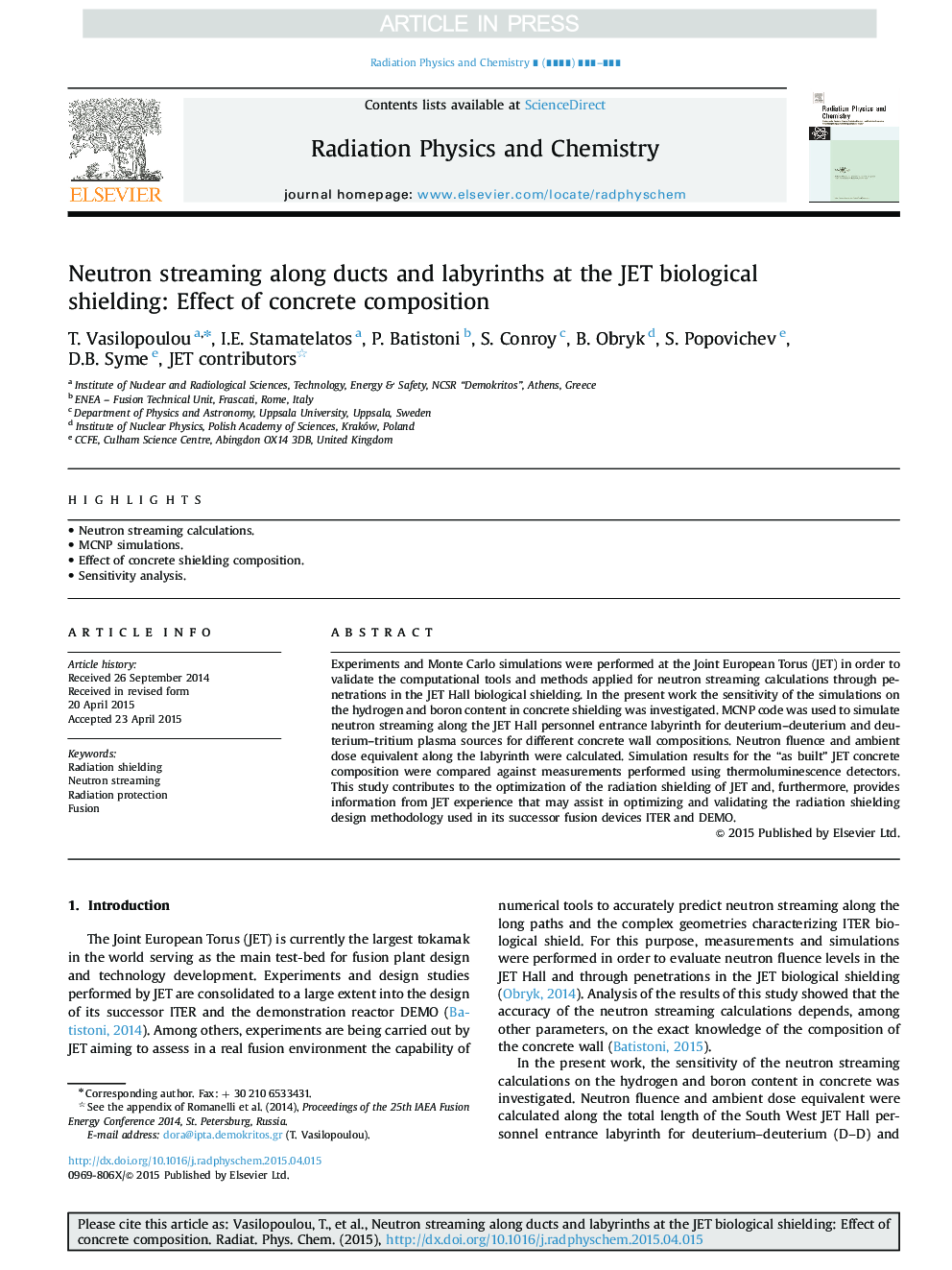| Article ID | Journal | Published Year | Pages | File Type |
|---|---|---|---|---|
| 8252835 | Radiation Physics and Chemistry | 2015 | 6 Pages |
Abstract
Experiments and Monte Carlo simulations were performed at the Joint European Torus (JET) in order to validate the computational tools and methods applied for neutron streaming calculations through penetrations in the JET Hall biological shielding. In the present work the sensitivity of the simulations on the hydrogen and boron content in concrete shielding was investigated. MCNP code was used to simulate neutron streaming along the JET Hall personnel entrance labyrinth for deuterium-deuterium and deuterium-tritium plasma sources for different concrete wall compositions. Neutron fluence and ambient dose equivalent along the labyrinth were calculated. Simulation results for the “as built” JET concrete composition were compared against measurements performed using thermoluminescence detectors. This study contributes to the optimization of the radiation shielding of JET and, furthermore, provides information from JET experience that may assist in optimizing and validating the radiation shielding design methodology used in its successor fusion devices ITER and DEMO.
Related Topics
Physical Sciences and Engineering
Physics and Astronomy
Radiation
Authors
T. Vasilopoulou, I.E. Stamatelatos, P. Batistoni, S. Conroy, B. Obryk, S. Popovichev, D.B. Syme, JET contributors JET contributors,
